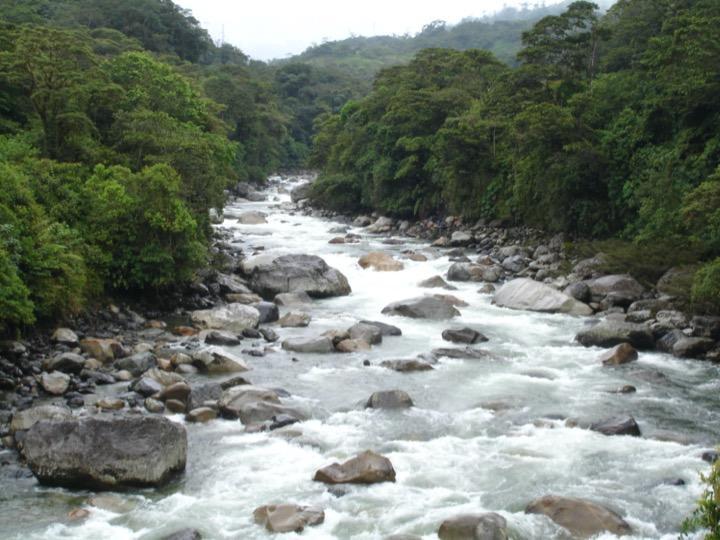Writter by: Vanessa Correa
As of September 30, Ictio collected 63,530 observations on 31,824 fish lists (fishing events). This is the result of the work of 335 people and institutions actively participating and sharing data in the Citizen Science for the Amazon project. This information was generated in 150 basins of the Amazon that constitute 75% of the total of the 199 basins at the BL4 level – the fourth of seven hierarchical levels of basin detail according to Venticinque et al.2016 and A new geographic information system (GIS) on basins and rivers.
Users uploaded their data through the Ictio application and the Ictio.org. We especially highlight the contribution of citizen scientists associated with the Sociedade para a Pesquisa e Proteção do Meio Ambiente (Sapopema), who made important contributions in the region of the Tapajós River and the region of the Main Canal of the Central Amazon.
The number of registrations in the Ictio application took off in numbers, probably due to the activities carried out by the partner organizations, which are gradually returning to work in the field, also attending to the prevention protocols for COVID-19. We note that the number of users is increasing and old users are reconnecting and enjoying the updated version of the application, Ictio 3.0.
In addition, the number of photos also increased and we have news related to their publication: The photos sent through the app are available in the new version of the Ictio.org page, where access to the photos is free. By using the application, users can authorize their names to be associated with the photos. And in the case of users who do not want to associate their names with the data and photographs, they will appear as anonymous. Users can change these settings in the main menu of the app, go to Settings, and enter the option Name Associated with your Records, where they can choose if they would like the public to see their names.
Until the last quarter, 63,530 accumulated observations were shared on the Ictio application and platform (Ictio.org) which is equivalent to an increase of 10% compared to the previous quarter (April – June 2021: 57 372 observations). The fish lists presented an increase of 20%, since in the last quarter they were 31,824 and in the previous one they were 26,458.
The number of lists shared with the Ictio application and platform by BL4 sub-basin is found in Figure 1.Figure 1. In it, the Amazon / Solimoes river basin (between Juruá and Negro) stands out with 5,245 lists, followed by the Madeira river basin (above Jamari) with 4,650 lists.
Figure 1.
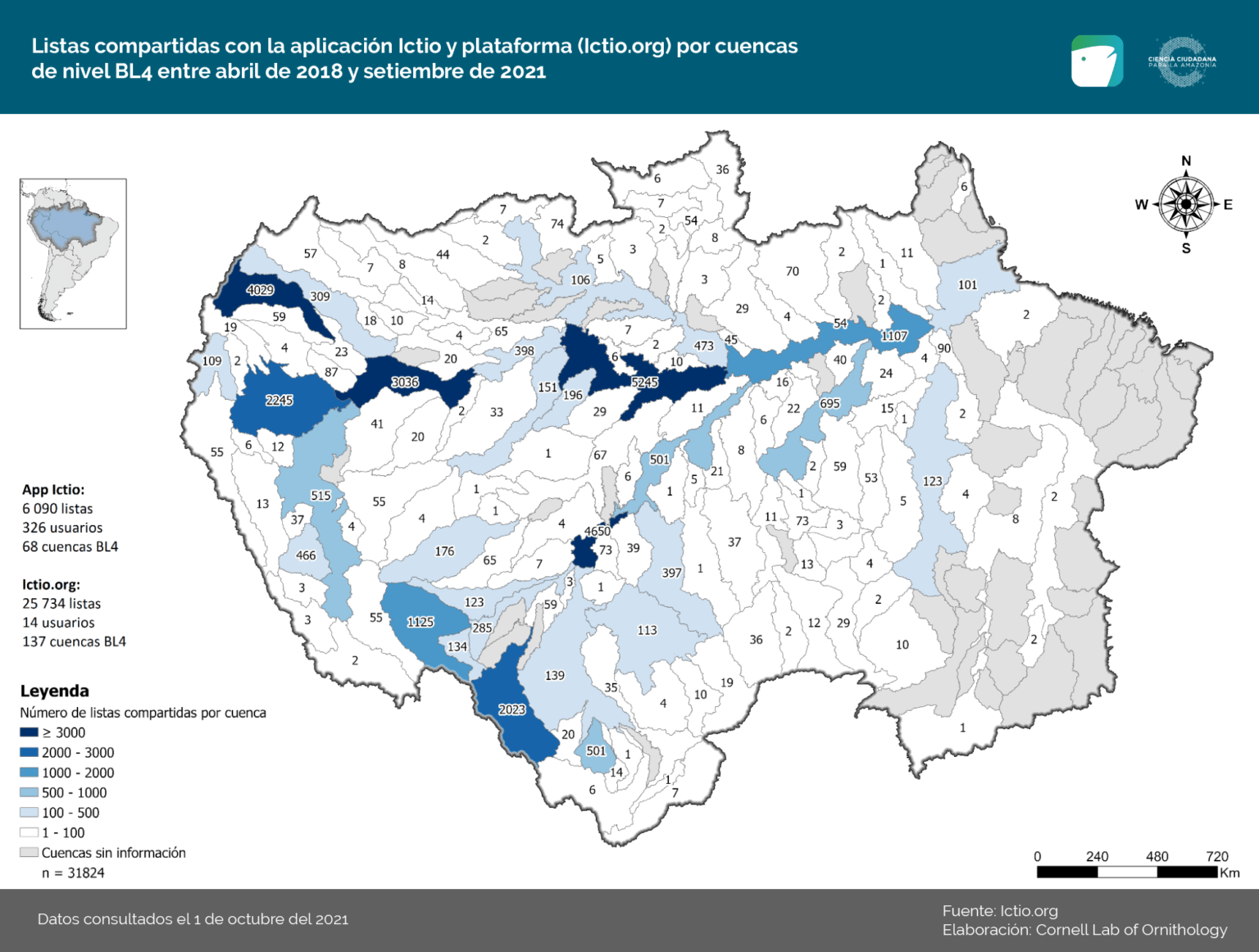
Figure 1. As of September 30, Ictio added a total of 63,530 observations in 31,824 lists of fish (fishing events). This information was generated in 150 basins of the Amazon that constitute 75% of the total of the 199 basins level BL4, as a result of the work of 335 individuals and organizations.
Similarly, with the Ictio application, 782 lists were registered, which means an increase of 49% compared to the previous quarter (525 lists). The Figure 2 shows the number of lists shared with the Ictio application in each BL4 basin.
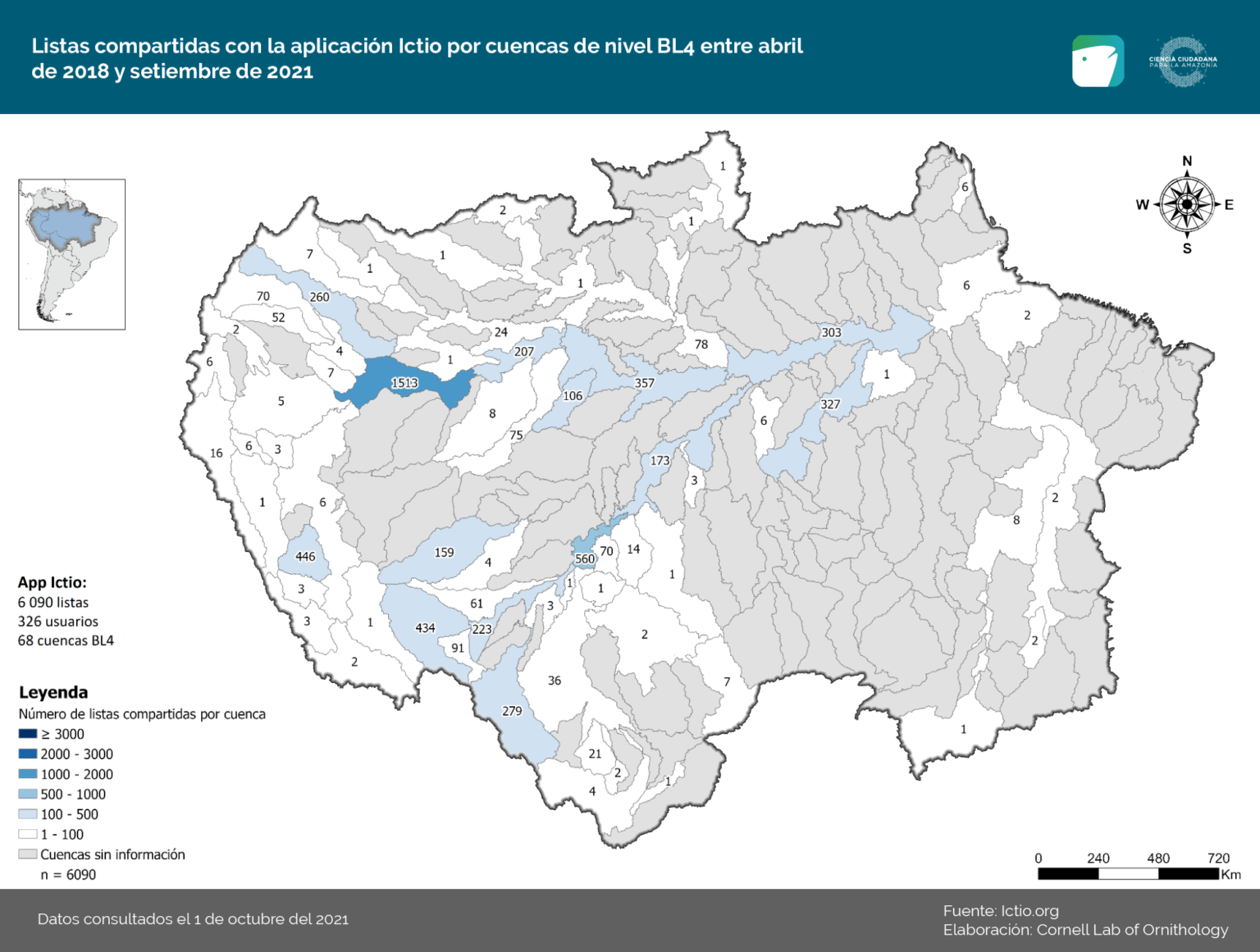
Figure 2. Until September 30, the Ictio application gathers 11,277 observations in 6,090 lists of fish. These data come from 68 BL4 basins. The basin with the highest number of lists was Amazonas (above Jandiatuba), with 1513 lists of fish.
Between July and September 2021, Prochilodus nigricans (see common names below) stood out once again as the most observed species. In a classification of the 10 species with the highest observations (Figura 3), P. nigricans is followed by Triportheus sp. and Brycon sp. The number of observations of P. nigricans in this quarter follows the trend of observations in the data accumulated since April 2018, thus remaining the most recorded species since the launch of the application in 2018. Figure 4 presents the percentages of lists that include records of P. nigricans – its occurrence/presence in headwaters and in large rivers is widely known in the Amazon Basin, and the records of the application and the platform (Ictio.org) evidence this.
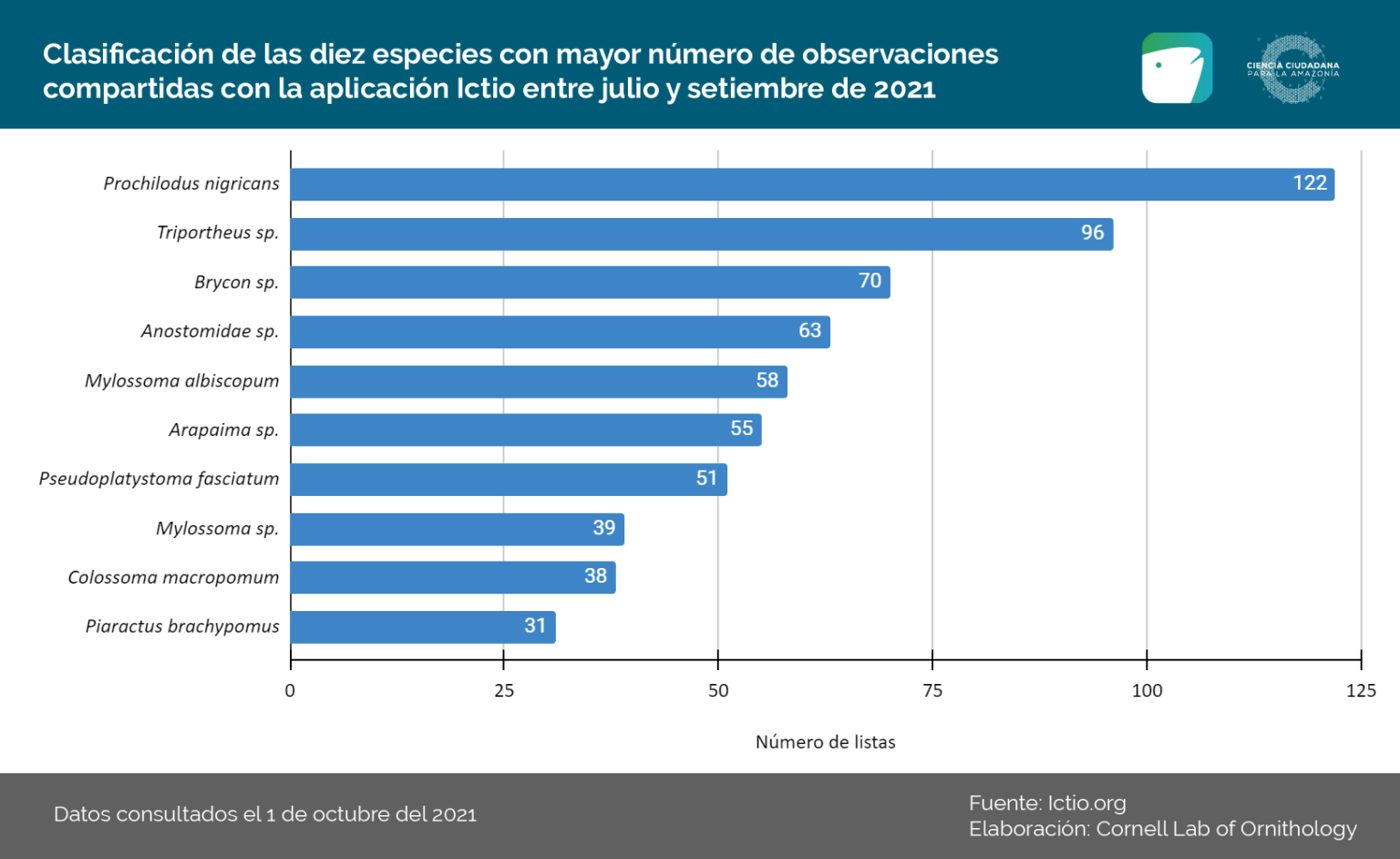
Figure 3. The total number of observations of the ten most recorded species in the application and platform (Ictio.org) in the last quarter was 623 observations, while adding the observations of all species also in the last quarter the total was 1,138 observations.
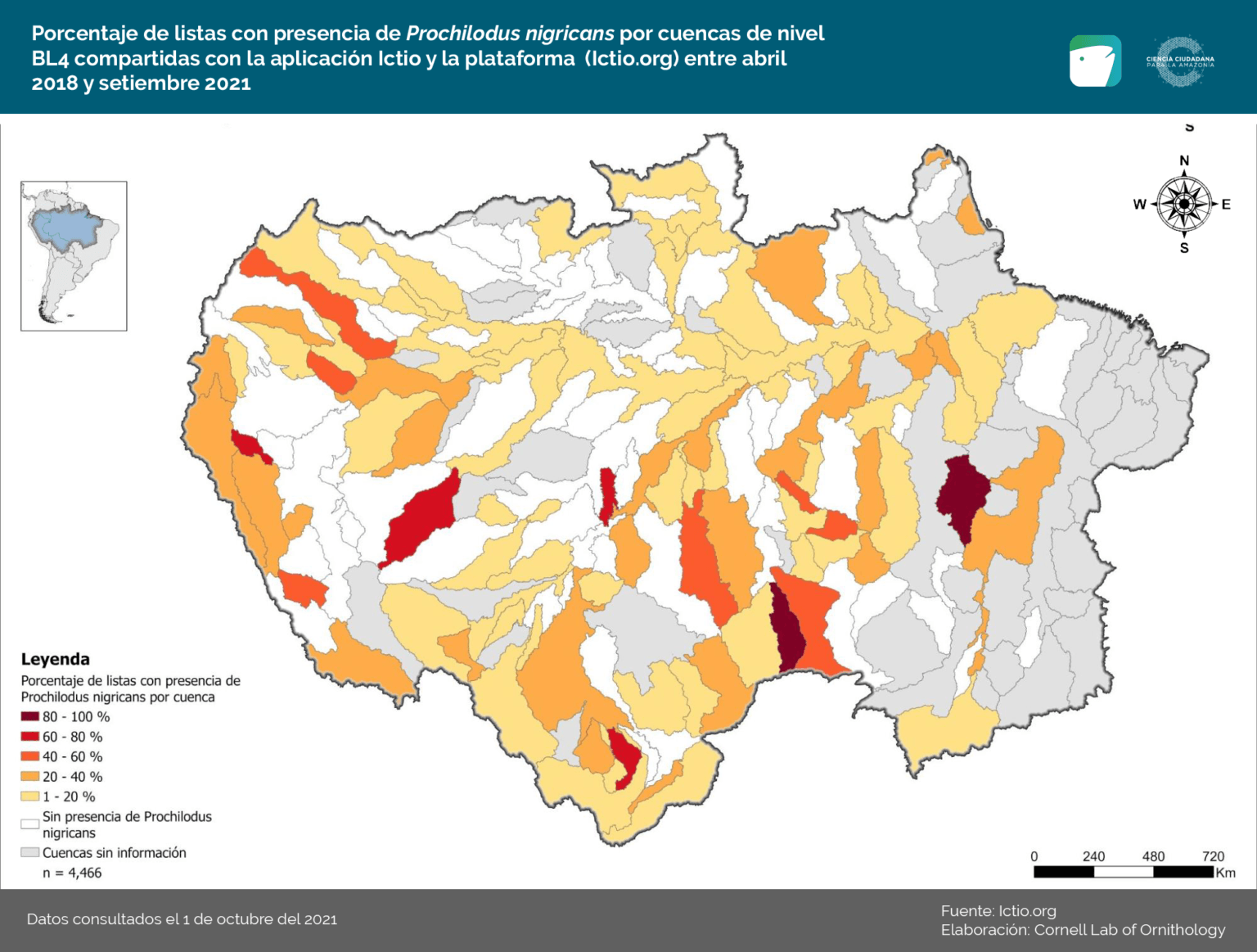
Figure 4. Percentage of lists of the application and web platform with the presence of Prochilodus nigricans (by sub-basins of level BL4)
Through the Ictio application, 782 lists have been registered between July and September 2021. The BL4 basin with the highest number of lists was Amazonas, above Jandiatuba (Figure 5), between Peru, Brazil and Colombia; followed by the area formed by the main channel of the Amazon River, between the Negro River and the Xingú River, in Brazil.
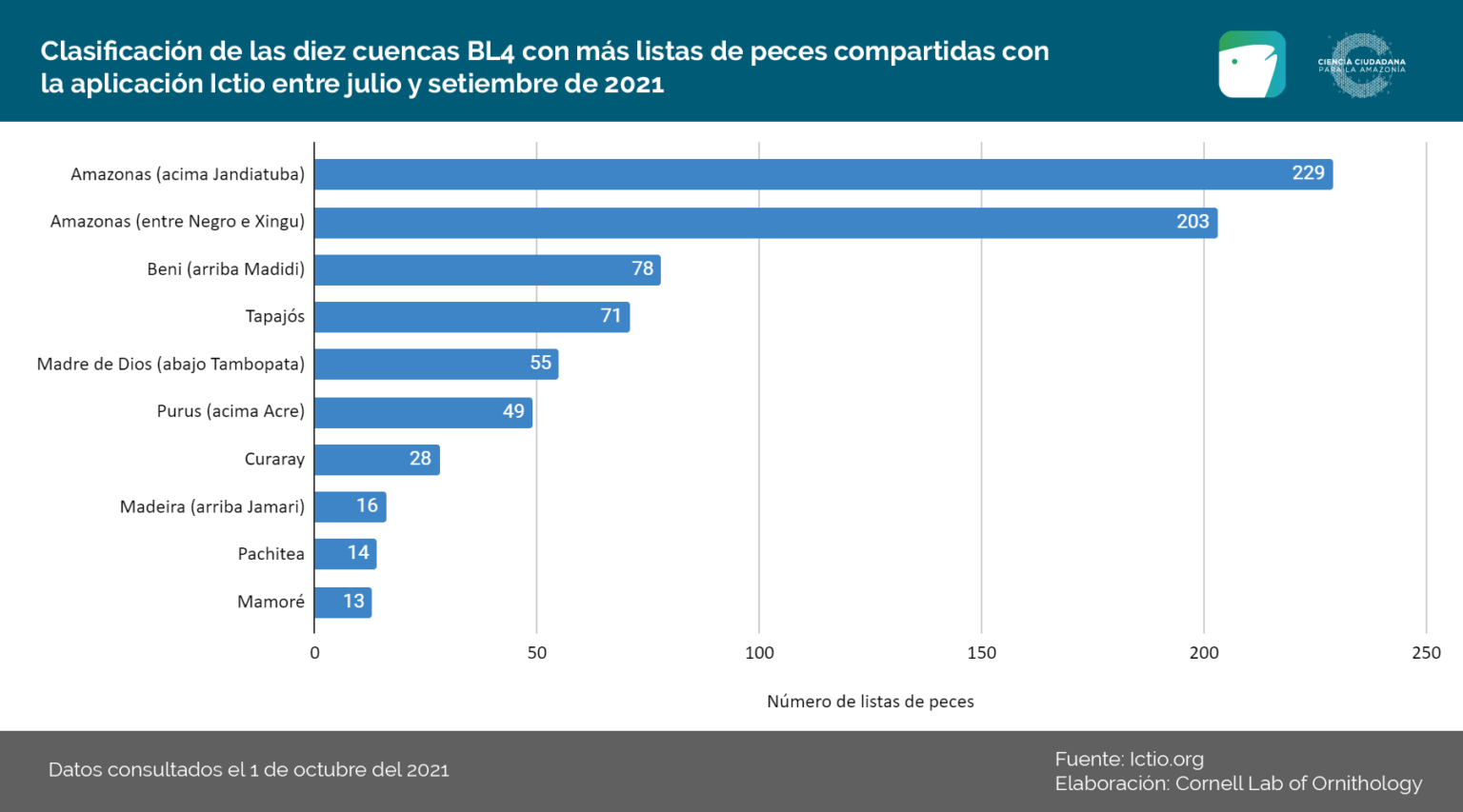
Figure 5. Ranking of the 10 BL4 sub-basins with the most lists registered in the last quarter.
In addition, between July and September 2021, the largest number of citizen scientists using the Ictio application are in the BL4 Amazonas sub-basin (between Negro and Xingú) where Sapopema, MOPEBAM and Projeto Saúde e Alegría lead the implementation of Ictio, followed by scientists from the Tapajós river sub-basin, where Sapopema, MOPEBAM and Projeto Saúde e Alegria are coordinating collective activities with teachers and students; while the most active user registered 83 lists in the Beni River basin (above Madidi), in Bolivia. These good results highlight the productive work of our partners of the Citizen Science Network for the Amazon.
Ictio knowledge: learn the genres or scientific names and common names by country!
- Anostomidae: Ruta(Bolivia); aracu, aracu cabeça-gorda, piau (Brazil); lisa, cheo, guaracú (Colombia); lisa, tanla (Ecuador); lisa (Peru).
- Arapaima sp.: Paiche (Bolivia), Pirarucu (Brazil), Arapaima, Paiche, Piracucu (Colombia), Paiche (Ecuador), Paiche (Peru).
- Brycon sp .: yatorana, mamuri, yaturana, matrinchán (Bolivia); matrinxã, jatuarana (Brazil); shad, sabaleta, zingo (Colombia), shad, mahuaso, katupa or handia (Ecuador) and shad (Peru).
- Colossoma macropomum: Pacú, tambaqui (Bolivia), Tambaqui (Brazil), black cachama, cherna, gamitana (Colombia), paco (Ecuador), gamitana (Peru).
- Mylossoma sp: pacupeba (Bolivia), pacu-comum (Brazil), and palometa (Colombia, Ecuador and Peru).
- Piaractus brachypomus: Tambaqui, Pacu (Bolivia), Pirapitinga (Brazil), Paco, Cachama blanca (Colombia), Cachama blanca (Ecuador), Paco (Peru).
- Prochilodus nigricans: Sábalo (Bolivia); curimatã, curica or papa-terra (Brazil); bocachico (Colombia and Ecuador); Challua (Ecuador) and Boquichico (Peru).
- Pseudoplatystoma sp.: Surubíes (Bolivia), Surubins (Brazil), Pintadillos (Colombia), Pintadillos (Ecuador), Doncella (Peru)
- Triportheus sp.: panete (Bolivia), sardinhas (Brasil), sardina (Colombia y Perú), y pechón y sapamama (Ecuador).




